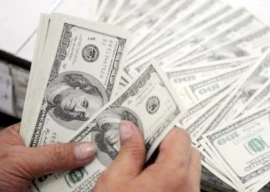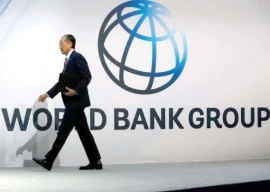
Sui Northern Gas Pipelines Limited (SNGPL) announced on Friday last week that gas supply to all industries, except for fertiliser plants, in Punjab had been suspended for an indefinite period because of severe shortage. However, residential consumers will continue to get gas.
Petroleum Minister Dr Asim Hussain also said that January would be a month of gas emergency and warned that supply to all industries and compressed natural gas (CNG) stations across the country could be stopped for the entire month. According to the minister, the gas shortfall has risen to more than one billion cubic feet per day.
“Gas suspension will have a drastic impact on the industry as well as the economy. Already, the energy shortage and high interest rates have put a heavy strain on the large-scale manufacturing sector, whose growth has been negligible for the last three years,” said Hamad Aslam, Research Head at Lakson Investments.
He said the energy shortage and inter-corporate debt would shave 3.5 per cent off economic growth, adding had those issues been not there, the gross domestic product (GDP) would have grown 6 per cent this fiscal year, keeping in view the revised GDP growth target of 3.5 per cent.
Exports are projected to be around $24 to $25 billion this year, with major contribution from the textile industry. However, this is also under threat as textile industries are mostly based in Punjab.
In the face of energy shortage, the large undertakings do have the option of installing their own power-generating plants based on coal or alternative energy. Aslam cited coal-fired plants as a viable option but cautioned that international coal prices remained volatile and any sharp rise in prices would increase substantially the power cost for the industry.
At present, coal prices are in the affordable range of $100 to $110 per ton in the world market.
Recently, Lucky Cement announced that it had installed a power generating unit based on waste heat from the system and earned carbon credits under the Kyoto Protocol of the United Nations.
In order to immediately tackle the gas crisis, Aslam suggested that the government should import liquefied natural gas (LNG) and pump it into gas pipelines.
Irfan Qaiser Sheikh, President of Lahore Chamber of Commerce and Industry, the premier chamber of Punjab, said all big chambers and trade associations of the province had been called for a meeting on Monday to frame a joint strategy and future course of action to cope with the energy problem.
“In Punjab, there has been a total shutdown of the industry for the past four days and jobs of four million daily wage-earners are under threat,” he said.
Sheikh pointed out that despite the closure, the industry had to pay some costs, like mark-up on loans and wages to employees, adding to mitigate the pain they had urged the government to ask the State Bank to waive interest payments for two months.
However, he did not agree that the industrial units should bring their own power-generating facilities. “It is not a simple alternative and is an expensive solution which everybody cannot afford.”
Already, energy accounts for 20 to 25 per cent of the total cost of general industry while in the case of textile the cost is around 35 per cent.
Published in The Express Tribune, January 2nd, 2012.


1727778647-0/diddy-(16)1727778647-0-165x106.webp)

1732014631-0/BeFunky-collage-(71)1732014631-0-165x106.webp)












COMMENTS
Comments are moderated and generally will be posted if they are on-topic and not abusive.
For more information, please see our Comments FAQ